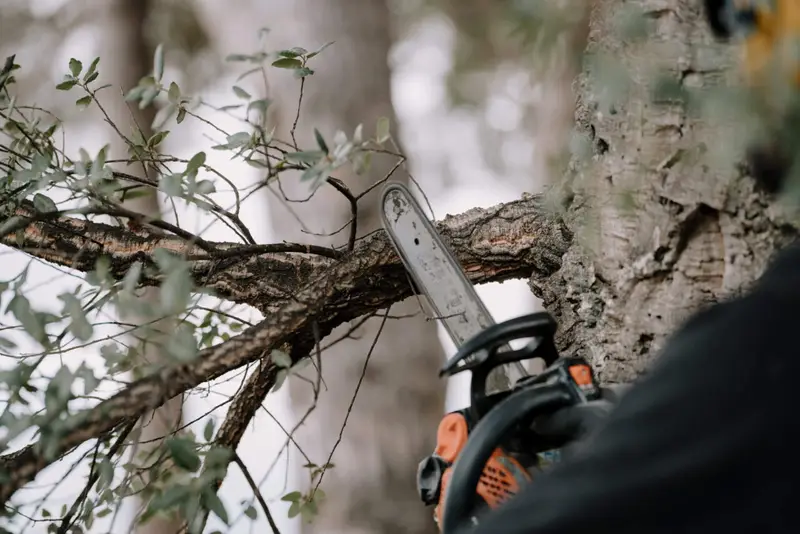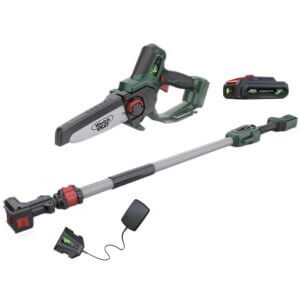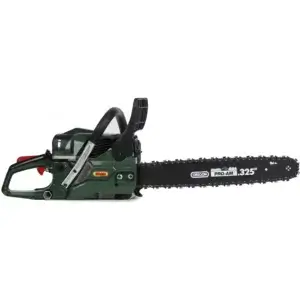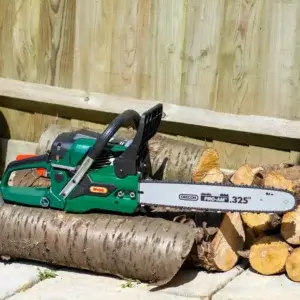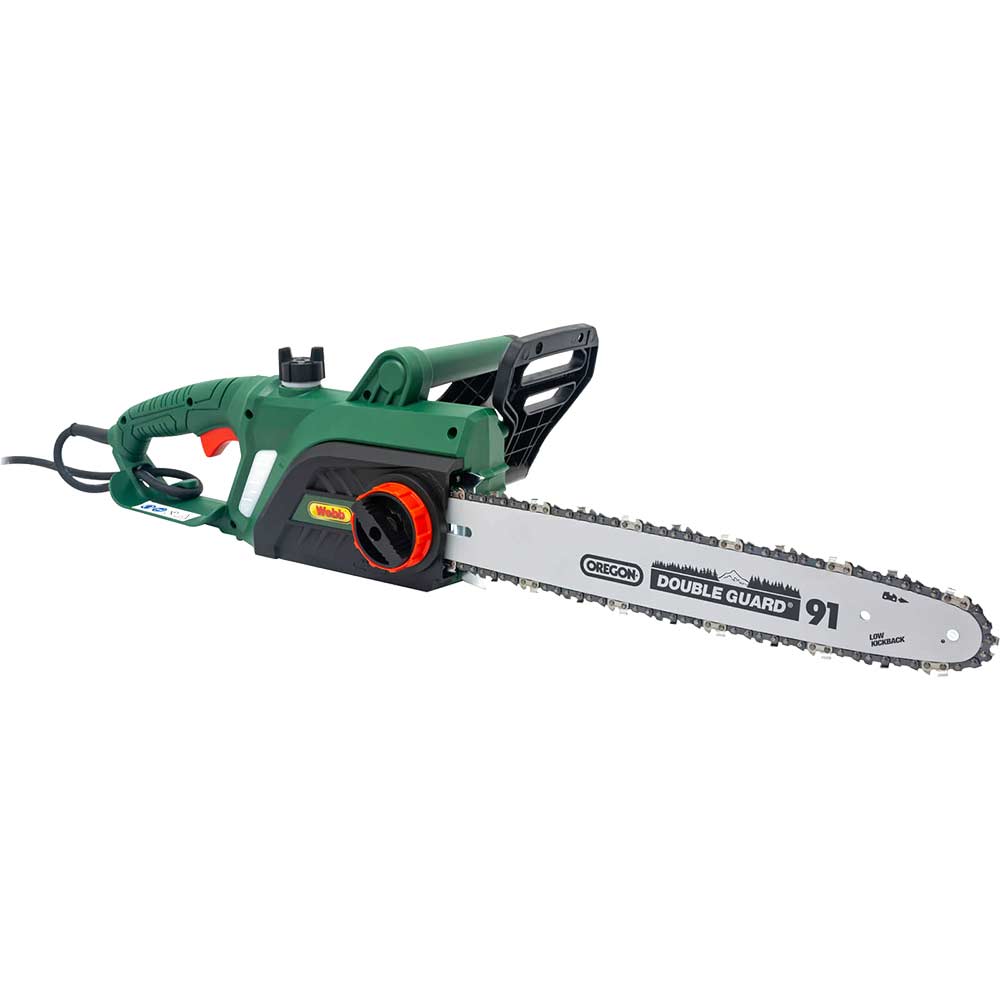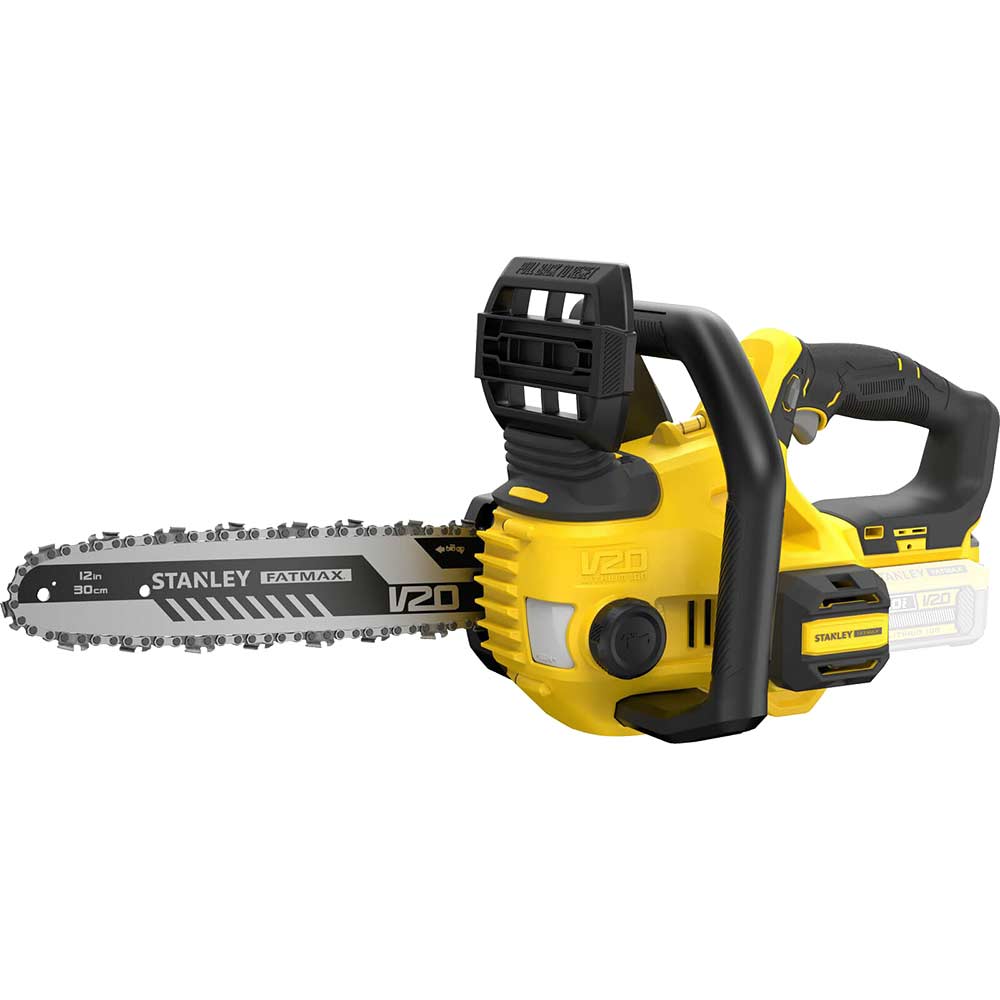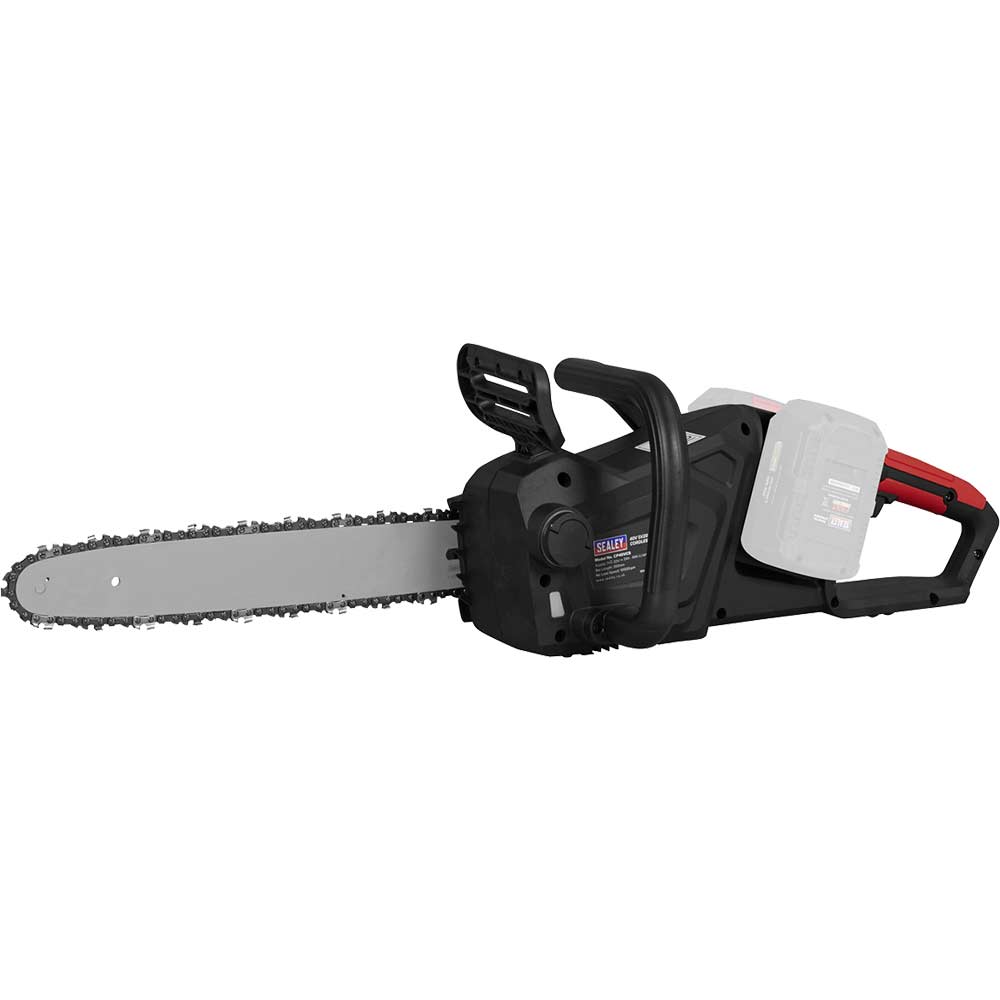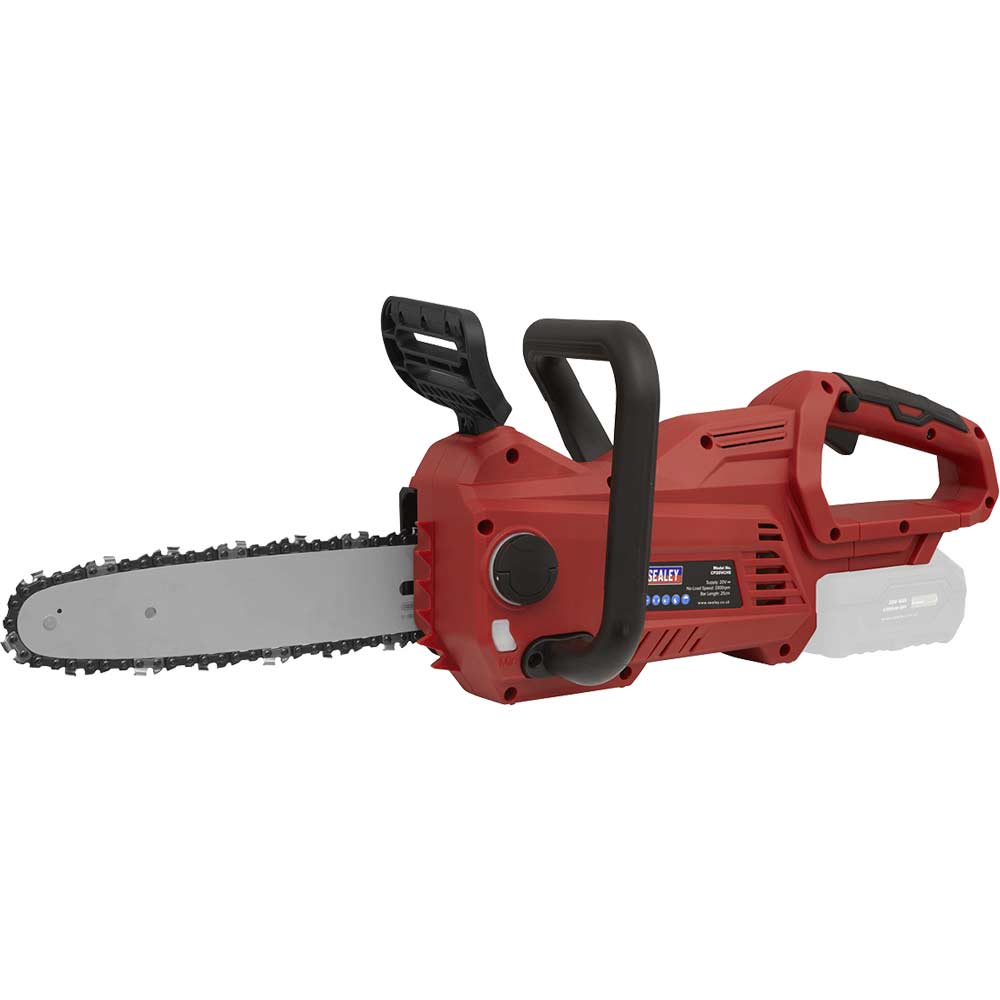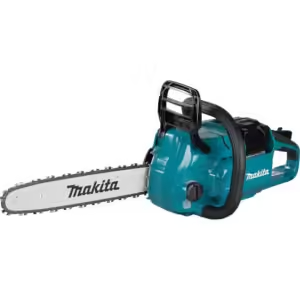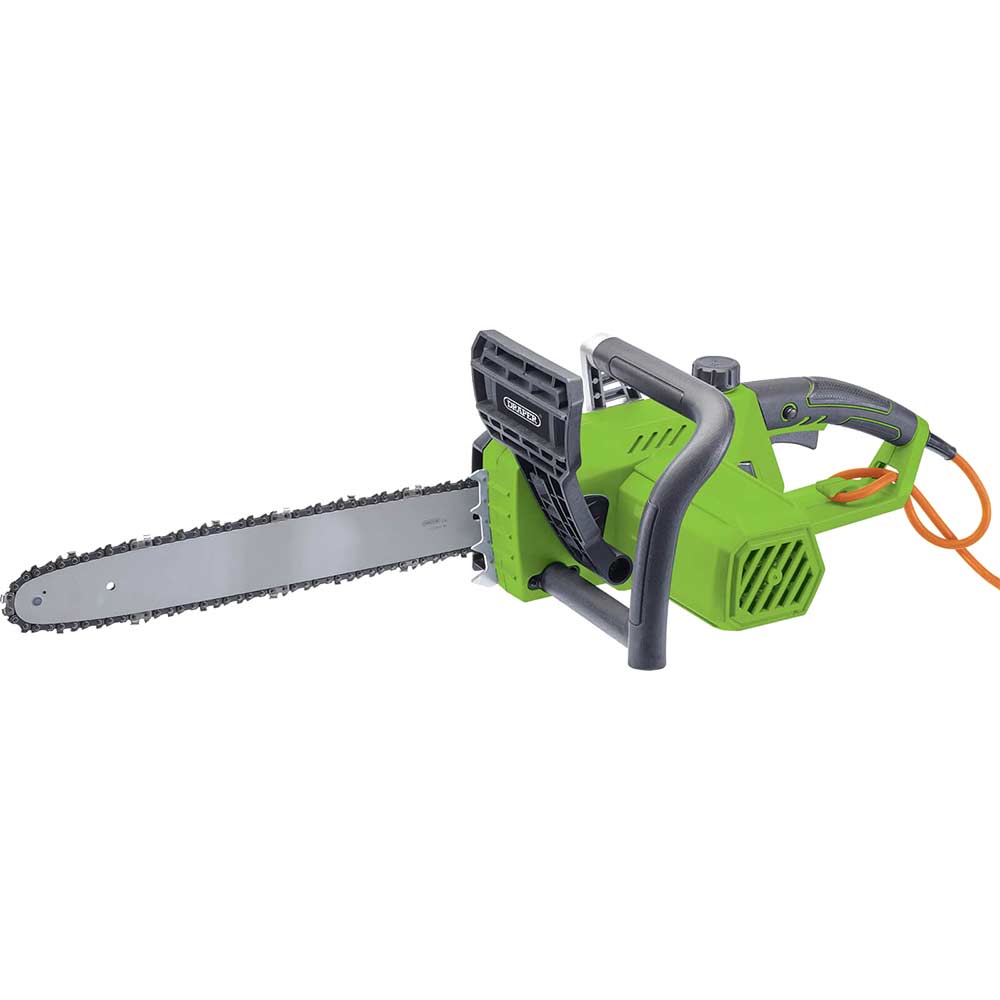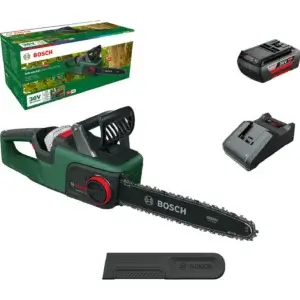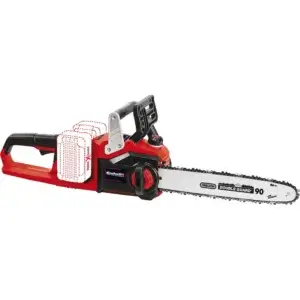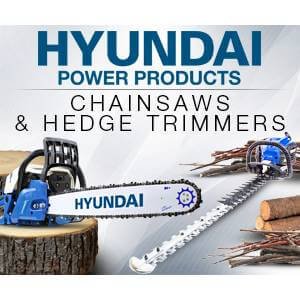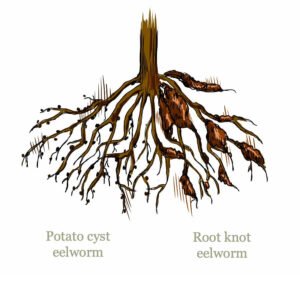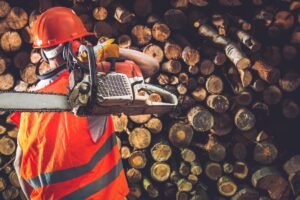Many people underestimate the importance of chainsaw cutting angles when felling trees. This guide will teach readers how to use their chainsaw effectively, including essential cutting techniques, proper safety measures, and advanced techniques for complex scenarios. By mastering these skills, arborists can improve precision and efficiency, ultimately reducing the risks associated with tree felling. Whether struggling with the correct cutting angle or looking to enhance their skills with an Oregon wedge or circular saw, this article offers practical solutions to common challenges faced by tree cutters.
Key Takeaways
- Understanding chainsaw cutting angles is crucial for safe and efficient tree felling
- Proper notch placement directs the tree’s fall, enhancing safety for operators and bystanders
- Regular maintenance, including sharpening, ensures precise cuts and reduces the risk of accidents
- Using wedges assists in controlling the direction of the tree’s fall during cutting
- Personal protective equipment is essential for safeguarding against chainsaw-related injuries
Understanding the Importance of Chainsaw Cutting Angles
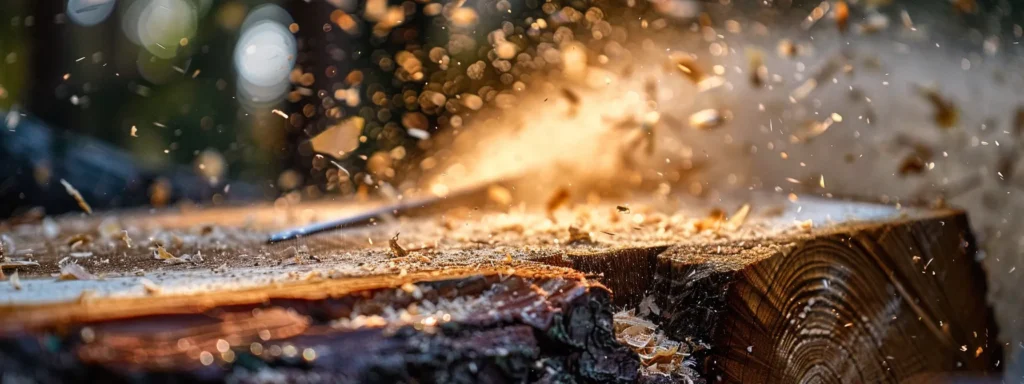
Understanding chainsaw cutting angles is crucial for effective tree felling. The angles of the cuts directly influence the tree’s fall direction, helping to ensure it lands safely in the desired area of the yard. Proper cutting angles also improve chainsaw efficiency, reducing the risk of accidents while working with longer lengths of wood for home projects, such as firewood preparation.
By mastering these techniques, gardeners can enhance safety measures and gain valuable insights into effective cutting methods. Each aspect covered in the following sections aims to equip users with practical skills for precise and safe tree cutting.
How Cutting Angles Influence Tree Fall Direction
Cutting angles play a significant role in determining the fall direction of a tree when using a power tool like a chainsaw. When the angles are precise, the tree is more likely to fall where intended, which is especially important in residential areas where obstacles, such as houses or power lines, may be present. For example, making a circular notch on the side of the tree that faces the desired direction of fall sets the stage for a controlled and accurate drop.
The placement of cuts directly influences how a tree reacts once it begins to fall. If the angles are off, a tree can take unexpected paths, putting both the saw operator and bystanders at risk. Ensuring proper angles not only aids in precision but also enhances safety as it mitigates the potential for accidents, particularly when using safety gear around hazardous areas.
In addition, understanding cutting angles is essential for effective milling, especially when preparing wood for projects like furniture or firewood. Incorrect angles can result in uneven cuts or damaged material, which can lead to additional costs or time spent redoing work. By mastering cutting angles, individuals can work more efficiently, whether they are on a ladder trimming branches or felling a tree for lumber.
The Role of Angles in Chainsaw Efficiency
The efficiency of a chainsaw is heavily influenced by the angle of the cutting tools, particularly the chisel and tooth configuration. A well-adjusted angle allows for smoother cuts, which not only speeds up the tree felling process but also reduces strain on the saw and the operator. For instance, a dull tooth or one set at an incorrect angle can result in increased friction, leading to wasted energy and time while cutting through lumber.
Another vital aspect of chainsaw efficiency is the relationship between cutting angles and the use of screws for bar attachment. Proper alignment of the bar and chain angles ensures that the chain moves freely and effectively, providing better penetration into the wood. This not only accelerates the cutting process but also enhances the lifespan of the saw, making it a worthwhile investment for any gardener or DIY enthusiast looking to tackle larger projects.
Finally, maintaining the correct cutting angles is essential for achieving the desired outcome in various woodworking tasks. This includes tasks like milling where precision is critical. By mastering these angles, operators can produce high-quality cuts that reduce waste and improve overall project efficiency, leading to less time spent on reworking and more time enjoying the results of their efforts:
- Understand how cutting angles affect tree fall.
- Recognise the significance of chisel and tooth angles for efficient cutting.
- Ensure proper alignment of screws for optimal bar performance.
- Apply knowledge of angles for successful lumber milling.
Enhancing Safety Through Proper Cutting Techniques
Proper cutting techniques directly enhance safety when using a chainsaw, especially during tree felling where weight distribution is a critical factor. An understanding of how to manage the saw’s weight during cuts helps to minimise fatigue and maintain control over the tool. This is particularly relevant when dealing with larger logs, as proper technique aids in preventing kickback and ensures a smoother cutting experience, reducing the amount of sawdust produced and thereby improving visibility during the task.
In woodworking, the simplicity of effective cutting techniques cannot be underestimated. Gardeners who master their chainsaw’s angles will find that they can cut wood efficiently, leading to better results when creating firewood or preparing timber for other projects. The focus on cutting angles not only ensures cleaner cuts but also helps in understanding the best positioning of the body relative to the wood being cut, which is crucial for maintaining balance and safety throughout the process.
Lastly, utilising proper cutting angles can greatly reduce the risks associated with falling wood and flying debris, a common hazard in chainsaw operation. By applying precise cutting techniques, operators can anticipate the natural weight and movement of the tree, allowing them to guide the fall safely away from hazards such as buildings or other structures. This fosters a safer working environment, ultimately allowing gardeners to enjoy their time spent on woodworking and firewood preparation without unnecessary risks.
Essential Chainsaw Anatomy for Precision Cutting
To achieve precision in tree felling, understanding chainsaw anatomy is essential. Key components such as the chain, bar, and cutting angles significantly affect how the saw interacts with the trunk. Adjusting chainsaw settings ensures accurate cuts, while selecting the appropriate bar and chain for the task can enhance efficiency. Proper use of personal protective equipment is crucial for safety during these operations.
Key Components That Affect Cutting Angles
The depth gauge is a critical component in chainsaw operation that directly impacts cutting angles. This tool ensures that the cutting tooth doesn’t dig too deep into the wood, maintaining an optimal cutting depth for effective felling. If the depth gauge is set incorrectly, it can lead to improper cutting angles, causing the chainsaw to either stall or bind during use, which can be frustrating for the operator.
Another important aspect of chainsaw anatomy is the sharpening of the cutting teeth. A well-sharpened bit allows for cleaner cuts at the correct angles, resulting in more efficient operation. Gardeners should regularly check and maintain the sharpness of their chainsaw teeth to prevent unnecessary fatigue and to ensure they achieve precise cuts, which are essential for safely felling trees.
Finally, wearing chaps enhances safety while working with a chainsaw. While they do not affect cutting angles directly, they provide crucial protection against any accidents or kickback that may occur during tree felling. By prioritising safety equipment alongside understanding cutting angles and proper chainsaw anatomy, operators can work more confidently and effectively in their gardening projects.
Adjusting Chainsaw Settings for Accurate Cuts
Adjusting chainsaw settings is essential for achieving accurate cuts, particularly when using a powerful tool for tasks such as tree felling. Ensuring that the gear is correctly aligned can significantly influence performance. Regular maintenance, including checking the tension of the chain and adjusting the depth gauge, helps maintain optimal cutting angles, leading to cleaner cuts and reducing dust during operation.
The angle of the chain and the type of cutting teeth also contribute to the efficiency of the saw. For instance, a properly sharpened chain allows the cutting teeth to engage the wood effectively, reducing wear and avoiding excess friction. This enhances the precision of each cut, promoting smoother operation much like a well-tuned table saw, which is also affected by its settings.
The use of personal protective equipment, such as chaps, is equally important during these adjustments. While they do not directly impact cutting angles, they provide vital protection against any flying debris or kickback that may arise from improper setting changes. Therefore, maintaining a focus on equipment settings coupled with safety gear can help operators work confidently, improving their overall tree felling strategy.
Choosing the Right Chain and Bar for Your Task
Choosing the right chain and bar for a chainsaw is fundamental for achieving precision in tasks like limbing or felling trees. A correctly matched saw chain and bar length enhance cutting efficiency and control, allowing the operator to perform tasks more effectively. For instance, a shorter bar is preferable for intricate cuts, while a longer bar is ideal for larger trunks, ensuring optimal performance tailored to the specific job at hand.
The saw chain’s configuration and sharpness significantly impact cutting angles and performance. Selecting a chain with the appropriate tooth shape can determine how well it bites into the wood. Regularly checking the sharpness of the chain, alongside using quality oil for lubrication, ensures smoother cuts and helps to maintain the desired angles throughout the cutting process.
Understanding the relationship between chain type and task requirements, such as those associated with an angle grinder or miter saw, is vital. For example, a skip-tooth chain offers faster cutting for larger jobs, while a full complement chain provides more control for fine work. By aligning the chain and bar correctly with the task, operators can confidently achieve precise cuts while promoting safety during their woodworking projects.
Safety Precautions Before Starting Tree Felling
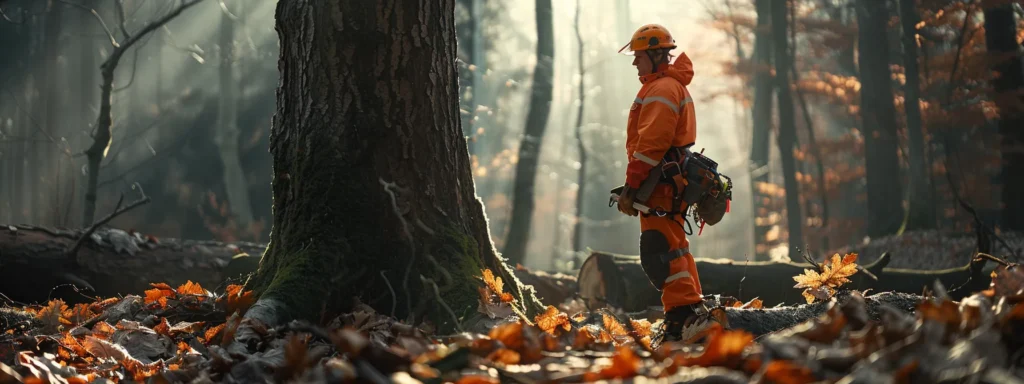
Before beginning the tree felling process, it is essential to wear appropriate Personal Protective Equipment (PPE) such as helmets and chaps to ensure safety. Assessing the tree and its surroundings helps identify potential hazards, while careful planning of the cutting approach ensures a controlled operation. Each of these topics will provide practical insights for effective and safe tree felling.
Personal Protective Equipment to Wear
When preparing for tree felling, wearing appropriate Personal Protective Equipment (PPE) is essential for ensuring safety during chainsaw operation. Essential gear includes a hard hat, which protects the head from falling branches, and safety glasses to shield the eyes from debris. These pieces of equipment are crucial for minimising the risk of serious injuries while working in potentially hazardous conditions.
Additionally, well-fitted chainsaw chaps offer vital protection for the legs against accidental cuts. They are designed with multiple layers of protective materials that can stop the chain if it comes into contact with the leg. Wearing steel-toed boots is also advisable, as they provide robust protection for the feet against heavy logs and sharp chainsaw debris.
Lastly, hearing protection, such as earmuffs or plugs, helps reduce exposure to loud chainsaw noise, which can be damaging over time. As chainsaw operations can produce significant noise levels, especially during extended use, safeguarding hearing is just as important as protecting against physical injuries. This comprehensive approach to personal protection not only enhances safety but also boosts confidence in handling chainsaw tasks effectively.
| Personal Protective Equipment | Purpose |
|---|---|
| Hard Hat | Protects the head from falling debris |
| Safety Glasses | Shields the eyes from flying particles |
| Chainsaw Chaps | Protects the legs from cuts |
| Steel-Toed Boots | Protects the feet from heavy objects |
| Hearing Protection | Reduces exposure to loud noise |
Assessing the Tree and Surroundings
Before felling a tree, it is crucial to assess the tree and its surroundings carefully. Gardeners should look for signs of decay or damage on the tree, such as dead branches or a leaning trunk, which can affect the fall direction. Understanding these factors helps in deciding the most suitable cutting angles, ensuring a safer and more controlled operation.
Additionally, evaluating the area surrounding the tree is essential. Operators need to identify potential hazards, like nearby structures or power lines, that could pose risks during the felling process. By mapping out the fall zone and preparing for obstacles, they can use cutting techniques that guide the tree’s fall away from danger, enhancing safety for themselves and bystanders alike.
Finally, considering the wind direction is vital before starting the cutting process. A strong gust can influence where the tree falls, making it crucial to take this element into account when determining cutting angles. By planning ahead and including environmental factors, gardeners can improve their precision while reducing risks, leading to successful tree felling outcomes.
Planning the Cutting Approach Carefully
When planning a cutting approach, it is vital to consider the tree’s characteristics and surrounding environment. Gardeners should assess the tree for signs of weakness, such as cracks or decayed wood, which can impact how it will fall. Understanding these factors helps in deciding the best cutting angles and techniques to prevent accidents during the felling process.
Additionally, mapping out a clear fall zone is crucial. Operators must take note of nearby structures, power lines, and other potential hazards that could obstruct the tree’s path. By doing a thorough assessment, they can anticipate any dangers and choose cutting methods that direct the tree’s fall safely away from obstacles, minimising risks for both the worker and bystanders.
Lastly, considering environmental factors, particularly wind direction, is essential when planning the cutting approach. Wind can significantly affect the tree’s fall trajectory, influencing the choice of cutting angles. By accounting for wind conditions, individuals can adjust their strategies, ensuring a safer and more successful tree felling experience.
Step-by-Step Guide to Mastering Precision Cutting Angles

To master chainsaw cutting angles for precision tree felling, it is crucial to prepare the chainsaw for optimal performance. This involves understanding techniques for making the directional notch and executing the back cut accurately. Additionally, controlling the tree’s fall with hinge wood provides essential guidance for safe felling. Each of these topics offers practical insights that are valuable for achieving success in tree felling tasks.
Preparing Your Chainsaw for Optimal Performance
Preparing a chainsaw for optimal performance begins with a thorough inspection and routine maintenance. Gardeners should check the chain tension, ensuring it is neither too tight nor too loose, as this can influence cutting angles and overall efficiency. Regularly sharpening the chain is equally essential, as sharp teeth make cleaner cuts and reduce strain on the motor, promoting a smoother cutting experience.
Additionally, monitoring the bar and oil levels is vital for preventing overheating during operation. A well-lubricated bar will perform better and be less prone to wear, which contributes to improved accuracy when making cuts. Gardeners should also clean the air filter and spark plug routinely, ensuring the engine runs efficiently, which further enhances performance during tree felling tasks.
Understanding proper fuel mixtures is another critical aspect in preparing the chainsaw. Using the manufacturer’s recommended fuel ratio ensures optimal combustion and reduces engine stress. This preparation guides gardeners toward achieving precise cutting angles, thus improving the effectiveness of their tree felling efforts:
- Inspect the chainsaw for maintenance needs.
- Sharpen the chain for cleaner cuts.
- Monitor bar oil levels to prevent overheating.
- Maintain the air filter and spark plug.
- Use the correct fuel mixture for optimal engine performance.
Techniques for Making the Directional Notch
Making a directional notch is a critical step in ensuring that a tree falls in the desired direction. To create a notch, start by making an angled cut on the side of the tree facing the intended fall direction. This cut, known as the face cut, should be about one-third of the tree’s diameter and should incline downward to create a wedge shape that guides the tree during the fall.
Next, the second notch cut should be made horizontally to connect with the angled cut. This cut should grasp the wedge, allowing it to push the tree in the intended direction effectively. By ensuring that the notches are precise and aligned, the individual can gain greater control over the fall, reducing risks associated with unexpected tree movements.
Finally, it is important to remember the placement of the cuts. The face cut should be positioned low on the tree to allow for greater leverage when making the back cut. This technique enhances the ability to control the final stages of the tree’s fall and promotes a safer working environment. By practicing these techniques, operators can develop the skills necessary for mastering chainsaw cutting angles, contributing to successful and precise tree felling outcomes.
Executing the Back Cut Accurately
Executing the back cut accurately is a crucial step in the chainsaw cutting process, as it determines how effectively the tree will fall in the intended direction. This cut is made on the opposite side of the tree from the directional notch and should be slightly above the notch cut. Maintaining the correct height helps ensure that the hinge wood remains intact, allowing the operator to control the fall more precisely while reducing the chances of the tree collapsing in an unintended manner.
One practical tip for success with the back cut is to maintain a consistent angle throughout the cut. Operators should watch for any changes in the tree’s behaviour as the cut progresses, which can indicate that the tree is about to fall. By being prepared to step back and assess the situation, individuals can avoid dangerous scenarios and react quickly if the tree begins to lean unexpectedly.
Additionally, it is important to leave enough hinge wood to control the fall while also preventing the tree from pinching the saw. This balance is essential to avoid jamming, which can happen when the tree begins to fall and the weight compresses the wood around the chainsaw. By practising these techniques in a safe environment, gardeners can become adept at executing back cuts, ultimately leading to greater safety and efficiency in their tree-felling efforts.
Controlling the Tree's Fall With Hinge Wood
Controlling a tree’s fall with hinge wood is a vital skill for gardeners and DIY enthusiasts engaged in chainsaw cutting. The hinge wood refers to the section of the tree that remains intact between the notch cut and the back cut, serving as a pivot point during the tree’s fall. Proper management of this hinge allows the operator to direct the fall precisely, reducing the risk of accidents and ensuring that the tree lands safely in the intended area.
For effective control of the tree’s fall, it is essential to leave an adequate amount of hinge wood when making the back cut. This hinge should be approximately 10% of the tree’s diameter, providing enough support to guide the tree’s descent. If the hinge wood is too thin, the tree may fall unpredictably, posing hazards to the operator and nearby structures. Ensuring the correct hinge size allows the gardener to maintain better control over the fall direction.
The placement of hinge wood also plays a crucial role in tree felling. Operators should aim to position the hinge wood perpendicular to the direction of the desired fall. This alignment enhances stability as the tree begins to lean and ensures that the operator can safely step back and observe the process. With careful attention to hinge wood management, gardeners can execute precision cuts confidently, leading to successful felling outcomes and greater safety during their gardening tasks.
Common Mistakes to Avoid When Cutting Trees

When cutting trees, several common mistakes can significantly impact safety and precision. Incorrect notch placement can lead to unexpected fall directions, while ignoring environmental factors, such as wind direction, can cause serious hazards. Additionally, skipping regular chainsaw maintenance may result in inefficient cuts and increased risk of accidents. Understanding these pitfalls is crucial for gardeners aiming to master chainsaw cutting angles.
Incorrect Notch Placement and Its Effects
Incorrect notch placement during tree felling can lead to severe consequences, impacting both safety and precision. If the notch is too high or poorly aligned with the desired fall direction, it can cause the tree to fall unpredictably, increasing the risk of the trunk hitting nearby structures or individuals. This makes it essential for gardeners to ensure proper notch technique for controlled and safe cutting.
Misplaced notches can also disrupt the intended hinge wood, which is crucial for directing the fall. For instance, if the notch is not deep enough or at an improper angle, the tree may not have the necessary pivot point required for a smooth descent. Gardeners should focus on understanding the proper placement and depth of the notch to avoid complications during the felling process.
Moreover, neglecting the relationship between notch placement and external factors such as wind can exacerbate the risks involved in tree felling. Wind direction can alter the tree’s fall path, amplifying the dangers associated with incorrect notch cuts. By thoroughly assessing these conditions and practicing proper notch techniques, individuals can significantly enhance their safety and effectiveness in using chainsaws for tree felling, ultimately achieving the precision required for successful gardening projects.
Ignoring Environmental Factors
Ignoring environmental factors is a significant oversight when planning to fell a tree. Wind direction can greatly affect how a tree falls, often causing it to drift unexpectedly. Gardeners should assess the surrounding conditions before making any cuts, as understanding the impact of environmental variables can be crucial for a safe and controlled felling.
In addition to wind, the ground’s slope and the tree’s own lean can influence its trajectory. If a tree has a natural lean or if it stands on a hill, these elements can contribute to an unpredictable fall. By carefully analysing these aspects, operators can adjust their cutting angles accordingly to mitigate risks and ensure the tree falls in the desired direction.
Taking the time to evaluate the environment prior to cutting can prevent accidents and costly damage. For example, trees in close proximity to structures or power lines require extra caution and planning. By incorporating environmental factors into the cutting strategy, gardeners can enhance the safety and precision of their tree-felling efforts, leading to better outcomes in their gardening and woodworking projects.
Skipping Regular Chainsaw Maintenance
Skipping regular chainsaw maintenance can lead to significant issues during tree felling. A well-maintained chainsaw operates at optimal performance, ensuring that cutting angles are accurate and effective. Without proper upkeep, the chain can become dull, leading to inefficient cuts that require more effort and increase the risk of accidents.
Many gardeners overlook routine checks, such as chain tension and lubrication. Neglecting these elements can result in excessive wear and tear on the saw, ultimately compromising cutting precision. For instance, a loose chain can cause the saw to bounce, while a lack of lubrication may generate overheating, both of which adversely affect the operator’s control over the cutting process.
Moreover, failing to replace worn parts regularly can escalate the risks associated with chainsaw operation. For example, a damaged blade can lead to unpredictable cutting angles, which places the tree’s fall direction in jeopardy. By establishing a regular maintenance routine, gardeners can significantly enhance their chainsaw’s performance and safety, contributing to more successful and controlled tree felling outcomes.
Advanced Techniques for Complex Tree Felling Scenarios
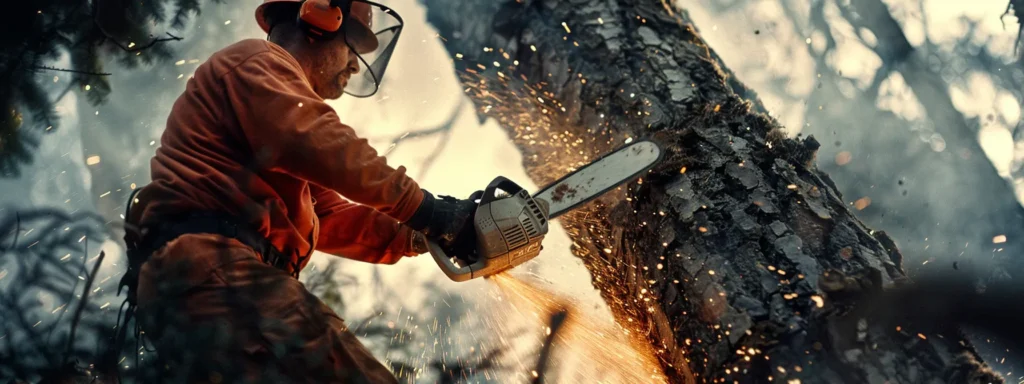
Advanced techniques for tree felling are essential for handling complex scenarios safely and effectively. This section will cover methods for managing leaning trees, which require careful planning to ensure safety during cutting. It will also explore strategies for felling thick or hard wood, highlighting the need for precise techniques. Finally, the use of wedges and felling aids will be discussed to enhance control and accuracy during the process.
Handling Leaning Trees Safely
When handling leaning trees, careful evaluation of the tree’s angle and surrounding landscape is crucial. Gardeners need to assess the condition of the tree to ensure that leaning branches or structural weaknesses do not compromise safety during cutting. An understanding of the tree’s mechanics allows operators to choose appropriate cutting angles, facilitating controlled felling in a predictable direction.
To enhance precision, it is advisable to employ a directional notch cut followed by a back cut positioned slightly above the notch. This technique helps to harness the tree’s natural lean, allowing it to fall safely away from hazards such as buildings or power lines. By following these cutting methods, users can confidently manage the cutting process, ensuring that the tree descends as planned.
Additionally, using wedges can significantly assist in directing the fall of a leaning tree. Placing wedges into the back cut creates an upward force, guiding the tree’s movement as it begins to fall. Gardeners should use wedges strategically to support controlled felling, reinforcing safety measures while achieving precise cutting angles:
- Assess the tree’s lean and surrounding environment.
- Use directional notch and back cuts for controlled felling.
- Employ wedges to guide the tree’s descent safely.
Cutting Strategies for Thick or Hard Wood
When dealing with thick or hard wood, using the right cutting strategy is essential for achieving clean cuts and maintaining safety. Operators should begin by making a shallow notch cut on the side of the tree facing the desired direction of the fall. This notch establishes the initial guide and helps direct the tree when it begins to fall, allowing for better control even in dense materials.
As the cutting progresses, it is crucial to apply even pressure and allow the chainsaw to work without forcing it. Operators can benefit from using a slower cutting pace, which reduces strain on the saw and ensures the teeth engage with the wood effectively, particularly when facing the dense grain of hardwoods. Patience during the process helps maintain cutting angles and overall precision, which is important for managing thicker trunks.
Employing wedges during the back cut can significantly enhance control while felling thick wood. By inserting wedges into the cut, operators can create upward pressure that aids in guiding the tree’s fall direction, reducing the likelihood of unpredictable movements. This technique not only enhances safety but also supports efficiency in cutting through challenging timber, particularly in complex scenarios where precision is paramount.
Utilising Wedges and Felling Aids Effectively
Utilising wedges and felling aids is a critical technique for enhancing precision in tree felling. Wedges can guide the descent of a tree, ensuring it falls in the desired direction, especially in challenging scenarios where direction and control are paramount. By placing wedges into the back cut, operators create upward pressure that assists in steering the tree away from hazards, making it safer for both the operator and the surrounding area.
When selecting wedges, it is vital to consider their size and shape to fit the specific task. Wider wedges can provide more substantial leverage, while thinner options may be better for precise adjustments as the tree begins to fall. By combining the right type of wedge with proper placement, such as positioning them parallel to the directional notch, operators can significantly improve the fall control on various wood types, including thick or hard timber.
In addition to wedges, using felling aids like ropes or pulleys can further enhance safety and accuracy during the felling process. These tools allow for greater control over the tree’s fall, helping operators manage unexpected movements as the tree begins to lean. By incorporating these aids into their felling strategies, gardeners can boost their overall efficiency and success in tree cutting tasks, allowing for a smoother and more predictable workflow.
Conclusion
Mastering chainsaw cutting angles is crucial for ensuring precision, safety, and efficiency in tree felling. Proper cutting techniques significantly influence the direction a tree falls, minimising risks to both the operator and the surroundings. Understanding and maintaining chainsaw settings enhances performance and reduces accidents, leading to cleaner cuts and more successful woodworking projects. By focusing on these key aspects, gardeners can confidently tackle tree felling tasks while achieving desired outcomes and fostering a safer working environment.
-

Webb WEV20PS 20v Cordless Pruning Saw 150mm
£124.95 Buy Now -

Webb WEV20EXTPS 20v Cordless Pruning Saw 150mm with Extension Pole
£124.95 Buy Now -

Webb WEPCS18 Petrol Chainsaw 460mm
£165.00 Buy Now -

Webb WEPCS16 Petrol Chainsaw 400mm
£149.00 Buy Now -

Webb WEECS402200 Electric Chainsaw 400mm
£99.95 Buy Now -

Stanley FatMax V20 18v Cordless Chainsaw 300mm SFMCCS630 SFMCCS630
£149.95 Buy Now -

Sealey CP40VCS Twin 20v Cordless Chainsaw 350mm
£138.95 Buy Now -

Sealey CP20VCHS 20v Cordless Chainsaw 250mm
£105.95 Buy Now -

Makita UC025G 40v Max XGT Cordless Brushless Chainsaw 350mm
£343.95 Buy Now -

Draper GCS1800D Chainsaw 350mm
£117.95 Buy Now -

Bosch ADVANCEDCHAIN 36V-35 36v Cordless Chainsaw 350mm
£307.95 Buy Now -

Einhell Professional GE-LC 36/35 Li 36v Cordless Brushless Chainsaw 350mm
£141.95 Buy Now
Chainsaw Buying Guide Articles
- Essential Chainsaw Buying Guide for New Homeowners
- How to Select the Perfect Pole Chainsaw for Trimming High Branches
- Unlocking the Benefits of Corded Electric Chainsaws
- Choosing the Right Chainsaw: Professional vs Consumer Models Comparison – Buying a Chainsaw Q&As
- Chainsaw Brands Comparison: Discover Your Ideal Match
Chainsaw Maintenance Articles
- Solving Chainsaw Bar Oiling Issues: A Step-by-Step Guide
- Essential Chainsaw Maintenance Tips for Enhanced Durability and Performance
- How to Select the Best Chainsaw Bar Oil for Your Needs
- Comprehensive Chainsaw Maintenance Guide for Enhanced Safety
- Step-by-Step Guide to Changing Chainsaw Spark Plugs
- Choosing the Perfect Replacement Chains for Your Chainsaw
- Step-by-Step Guide on Replacing Chainsaw Spark Plugs
- How to Select the Best Chainsaw Bar Oil for Your Needs
- Selecting the Ideal Battery for Your Electric Chainsaw: A Comprehensive Guide
- Step-by-Step Guide to Cleaning Your Chainsaw Air Filter Effectively
Chainsaw Operation Techniques Articles
- Step-by-Step Guide to Changing Chainsaw Spark Plugs
- Choosing the Perfect Replacement Chains for Your Chainsaw
- Comprehensive Guide to Proper Chainsaw Handling and Safety
- How to Select the Perfect Chainsaw Bar and Guide for Your Needs
- Effective Solutions for Chainsaw Starting Issues
- Top Tips for Boosting Fuel Efficiency in Petrol Chainsaws
Chainsaw Repair Advice Articles
- Comprehensive Guide to Fixing Chainsaw Starting Issues
- Step-by-Step Guide on Replacing Chainsaw Spark Plugs
- How to Select the Best Chainsaw Bar Oil for Your Needs
- Step-by-Step Guide to Cleaning Your Chainsaw Air Filter Effectively
- How to Replace a Chainsaw Chain: Your Comprehensive Guide
- Effective Solutions for Chainsaw Starting Issues
Chainsaw Safety Tips Articles
- Essential Chainsaw Safety Features: A Comprehensive Guide for Buyers
- Stay Safe with Chainsaw Safety Gear Essentials: Your Guide
- Chainsaw Safety: Strategies to Avoid Tree Cutting Accidents
- Essential Chainsaw Techniques for Safely Managing Tree Limbs and Branches
- Chainsaw Safety and Handling: Mastering Proper Techniques
- Comprehensive Guide to Proper Chainsaw Handling and Safety
- Essential Winter Chainsaw Storage Tips to Protect Your Equipment
- Mastering Chainsaw Safety: A Guide to Preventing Kickback
- Comprehensive Guide to Essential Chainsaw Safety Gear
- Expert Tips on Chainsaw Kickback Prevention: A Safety Guide
Chainsaw Storage Articles
- The Essential Guide to Storing Your Chainsaw Safely
- How to Select the Best Chainsaw Storage Case or Bag for Your Needs
Electric vs Petrol / Gas Chainsaws Articles
- Durability Comparison: Gas Versus Electric Chainsaws
- How to Decide on Electric Versus Gas Chainsaws: A Detailed Guide
- Reducing Your Carbon Footprint With Electric Chainsaws
- Why Opting for a Battery Powered Chainsaw Is a Smart Choice
- Selecting the Ideal Battery for Your Electric Chainsaw: A Comprehensive Guide
- Durability Comparison: Gas Versus Electric Chainsaws
- Electric vs Gas/Petrol Chainsaws: A Detailed Comparison of Power Output
- Petrol vs Electric Chainsaws: Explore the Pros and Cons
Tree Cutting Techniques Articles
- Mastering Chainsaw Cutting Angles for Precision Tree Felling
- How to Select the Perfect Chainsaw for Your Tree Cutting Needs
- Essential Safety Tips for Cutting Large Trees Using a Chainsaw
- Essential Chainsaw Techniques for Safely Managing Tree Limbs and Branches
- Chainsaw Safety: Strategies to Avoid Tree Cutting Accidents
- Chainsaw Safety and Techniques for Efficient Tree Felling
Types of Chainsaws Articles
- Why Opting for a Battery Powered Chainsaw Is a Smart Choice
- Reducing Your Carbon Footprint With Electric Chainsaws
- Uncovering the Evolution: History of Chainsaws Explained
- Unlocking the Benefits of Corded Electric Chainsaws
- Comparing Electric and Petrol Chainsaws: Key Factors to Consider
- Affordable Chainsaws for Beginners: A Buyer’s Guide
Chainsaw Accessories Articles
Articles Coming Soon

